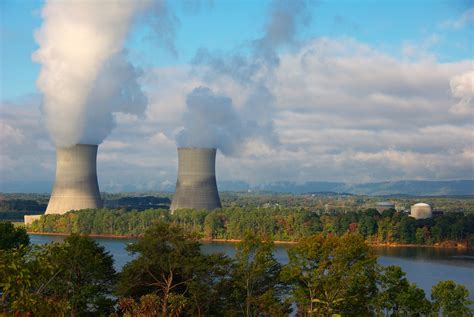The Diablo Canyon Power Plant, situated in San Luis Obispo County, California, is a nuclear power facility that has been a subject of concern and controversy due to its location and operational history. As one of the last remaining nuclear power plants in California, Diablo Canyon has faced numerous challenges and criticisms, prompting questions about its safety and reliability.
Seismic Risks
One of the primary concerns surrounding Diablo Canyon is its proximity to several major fault lines, including the San Andreas Fault. The facility is located near the Pacific Coast, an area prone to significant seismic activity. In 2008, a previously unknown fault line was discovered approximately 2,000 feet from the plant, which raised eyebrows among regulatory bodies and the public. The discovery of this fault, coupled with the plant’s design and construction, has sparked debates about the facility’s ability to withstand significant earthquakes.
Cooling System Concerns
The Diablo Canyon Power Plant uses an once-through cooling system, which pulls in large amounts of seawater to cool the reactor. This system has been criticized for its potential environmental impacts, including the killing of marine life. Moreover, concerns have been raised about the system’s efficiency and reliability, particularly in the event of equipment failure or natural disasters. The cooling system’s vulnerability to intake clogging from seaweed or other marine debris poses an additional risk to the plant’s safe operation.
Radioactive Waste Storage
The storage of radioactive waste at Diablo Canyon is another significant concern. The plant uses dry cask storage, a method where waste is stored in large, sealed casks. However, the lack of a national repository for nuclear waste means that these casks will remain onsite indefinitely, posing long-term risks to the environment and public health. The NRC has approved the use of dry cask storage, but critics argue that the system is not foolproof and could lead to accidents or leaks.
Cybersecurity Threats
As with any critical infrastructure, Diablo Canyon faces the risk of cyberattacks, which could compromise the plant’s safety and operational reliability. The increasing reliance on digital systems and the interconnectedness of these systems have created new vulnerabilities. While the NRC has implemented various measures to enhance cybersecurity, the evolving nature of cyber threats means that plants like Diablo Canyon must remain vigilant and adapt their security protocols to stay ahead of potential threats.
Human Error and Regulatory Compliance
Human error and regulatory compliance are also critical factors in ensuring the safe operation of Diablo Canyon. The plant’s operator, Pacific Gas & Electric (PG&E), has faced scrutiny over its maintenance practices and adherence to regulatory requirements. In 2018, the NRC identified a “low-to-moderate” security risk at the plant, which led to increased oversight and enforcement actions. While PG&E has made efforts to address these concerns, the risk of human error and non-compliance remains, highlighting the need for continuous monitoring and improvement.
Environmental Impact
The Diablo Canyon Power Plant’s impact on the environment is a multifaceted issue. Beyond the concerns related to its cooling system, the plant’s operation contributes to the broader debate about nuclear energy’s role in climate change mitigation. Proponents argue that nuclear power offers a low-carbon alternative to fossil fuels, crucial for reducing greenhouse gas emissions. However, opponents point to the risks associated with nuclear waste, the potential for accidents, and the environmental impacts of uranium mining as reasons to transition away from nuclear energy.
Future Prospects
Given the myriad risks and challenges facing Diablo Canyon, its future operation is a subject of considerable debate. In 2016, PG&E announced plans to retire the plant by 2025, citing a combination of market forces, regulatory challenges, and public preference for renewable energy sources. However, the pace of this transition and the ultimate fate of the plant remain uncertain, with discussions ongoing about potential extensions or earlier closures.
Conclusion
The Diablo Canyon Power Plant presents a complex case study in the risks and challenges associated with nuclear energy. While it provides significant electricity generation capacity, concerns over seismic risks, cooling system efficiency, radioactive waste storage, cybersecurity, human error, and environmental impact cannot be overlooked. As the energy landscape continues to evolve, with a growing emphasis on renewable energy sources and reduced carbon emissions, the future of Diablo Canyon and similar facilities will depend on their ability to address these challenges and demonstrate their safety, reliability, and environmental sustainability.
What are the primary concerns regarding the safety of the Diablo Canyon Power Plant?
+The primary concerns include seismic risks due to its proximity to major fault lines, issues with its cooling system, challenges in storing radioactive waste, potential cybersecurity threats, and risks associated with human error and regulatory compliance.
How does the Diablo Canyon Power Plant manage its radioactive waste?
+The plant uses dry cask storage for its radioactive waste. While this method has been approved by the NRC, concerns persist about the long-term safety and potential for leaks or accidents.
What is the current status of the Diablo Canyon Power Plant’s operation and its planned retirement?
+As of the latest available information, the plant is scheduled for retirement by 2025. However, discussions about its operational future, including potential extensions or earlier closures, are ongoing, influenced by factors such as market conditions, regulatory requirements, and public opinion.


